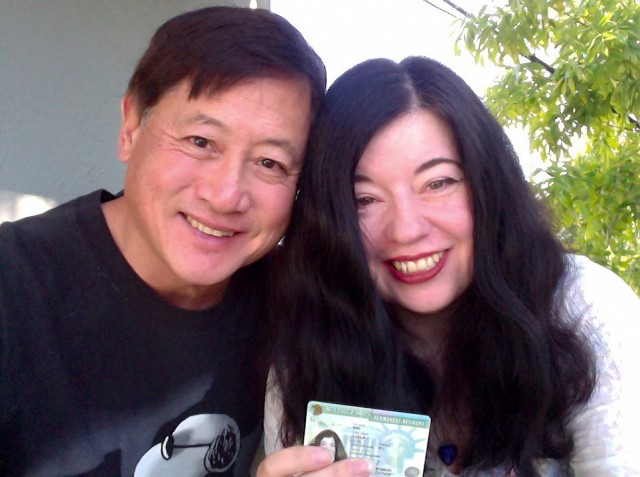Our U.S. visa journey was an interesting one! When we started our long-distance relationship, we had no idea what legal process we’d have to go through. We didn’t have a clue how complicated (or expensive) this process would be. Eventually we found out!

There was once a time when we thought that applying for a visa would be like applying for a passport. Fill in a form, send a couple of photos, wait a few weeks, and hey presto! the visa would arrive. But there came a day when we decided to think seriously about our options for closing the distance. We looked online, and made the shocking discovery that there was a whole scary world of visas out there. Even worse, all the choices looked incredibly complicated, expensive, and long-winded!
There clearly wasn’t going to be any easy way for us to be together. Our first task would be to decide which one of us would move. Next, we’d have to start the process of gathering together all the information, forms and documents we’d need. We’d also have to accept that it was going to be costly, and that it wasn’t going to be quick.
Decisions, decisions…
The first decision we needed to make was where to live. England or California? This wasn’t a straightforward decision to make. The idea that one of us would have to uproot from a place where we’d been living, and leave behind family and friends and everything familiar – well, that’s a daunting prospect. We also felt that we could be happy in either place. That meant there was no clear-cut reason for settling in one place rather than the other. However, being together was what counted most. So we did some detailed research into what the immigration process for each country would involve.
That first decision was pretty much made for us when Carla was laid off from her job in England. From what we’d read about the partner-type visas for the UK and the USA, it appeared that they had something in common. The “receiving partner” had to be able to prove that they could support the incoming partner financially. Carla no longer had her job, so there would be no way for her to support Larry financially in the UK. For that reason, we made the decision to try for a US visa instead.
A flat-rate visa processing fee
The next question was tricky. Would it be better for us to get married first, then apply for a visa as a married couple? Alternatively, should we apply for a fiancée visa, and get married when Carla arrived in California? We looked for answers online, but didn’t find enough clear information. It made sense to find an immigration attorney to give us some expert advice and help us through the visa process.
We looked online for a firm that offered a fixed, flat-rate fee for visa processing. That sounded more cost-effective than paying someone by the hour. Eventually, we settled on a firm based in New York, having read that we’d be able to go through the process mainly by email and phone. We sent them an email explaining our situation, and asking for advice.
The K-1 fiancée visa was the best fit for our circumstances… and that’s where our visa journey began. You can read more about it by clicking on the links below:
Our K-1 (fiancée) visa – the process that allowed Carla to come to the USA:
- The timeline for our K-1 visa process from start to finish
- Carla’s scary medical exam in London
- Carla’s interview at the U.S. Embassy in London
- A list of all the forms and documents Carla took to her interview at the U.S. Embassy
Our Adjustment of Status application – the process that led to Carla’s conditional permanent residence in the USA, and a two-year Green Card:
- The timeline for our Adjustment of Status process from start to finish
- Carla’s biometrics appointment (for fingerprints and photo) in San Jose
- Our Adjustment of Status (Green Card) interview
The Removal of Conditions – the process that led to Carla’s permanent residence in the USA, and a ten-year Green Card:

Important information to note
Please remember that all information given is from our own personal experience only. We’re not immigration experts, and nothing on our website should be construed as legal advice, or relied upon for your own visa process. Every case is different. For expert help and advice, we would always recommend that you contact an immigration attorney.
If you’d like to talk to us about your own visa experience, or your long-distance relationship, you’re welcome to get in touch with us on our Facebook page. We can’t give legal advice or financial help, but we’re always happy to hear from people in long-distance relationships, so if you’d like to talk anything through with us, please get in touch.
© Larry and Carla Sue